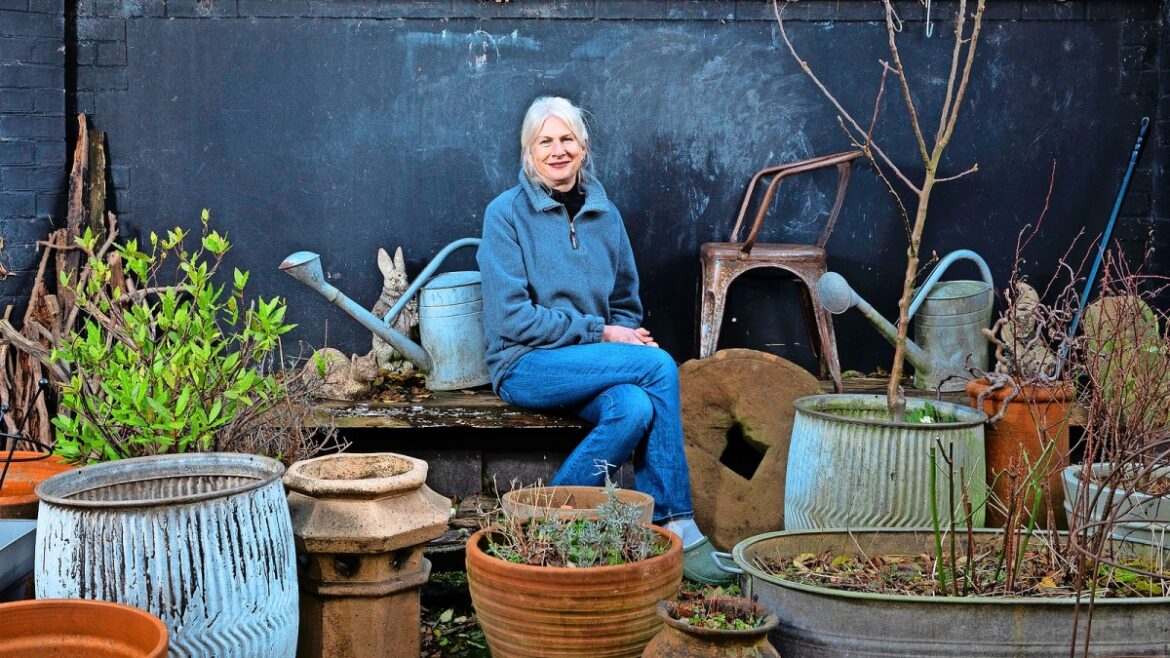My new garden may be small but old habits die hard and, almost by magic, the number of pots seems to have tripled. The hose that is far too long has been jumbled into a corner, next to an almost finished bottle of seaweed fertiliser, next to a pot with a dead pelargonium that now houses random weeds.
It’s clutter and, for some time, I hadn’t really noticed it. Until this week, when I did — and I was appalled. It’s the time of year when gardeners are given endless “to-do” items involving spring bulb planting, dividing perennials, planting trees, tidying beds. Yet, fundamentally, the most transformative thing that most of us can do this time of year is to clear the clutter.
• Read more expert advice about gardening
By clutter I mean all of the above but, also, any part of the garden that is ignored or used to store stuff you don’t want to deal with (compost bags etc). My mind is always full of future plans but I realised a few years ago that all of those pots dotted round the garden that were on my list to transform with fabulous planting (at some point) were not works in progress but actually clutter.
One of the best ways to “see” your garden through the eyes of others is to take photos. One day, some time ago, I was taking a photo of something else on my front porch and was shocked to see, in the background, a porch with a messy hodgepodge of unmatching pots and unloved, often dying, plants. It was the gardening equivalent of the broken toy bin in Toy Story.
I think most gardens have at least one “clutter corner” with similar flotsam. In mine there was a rose I hated in a large (cracked) pot that was also host to a self-seeding chestnut tree. Why was I keeping it? A tired hydrangea sat next to a sickly slug-wrecked hosta. For added ugliness, there was a plastic watering can, a dustpan and brush, and an empty pot which — inexplicably — was on a raised platform for all to view.
• Five ways to make your garden more wildlife-friendly
I am a veteran declutterer when it comes to the indoors and know that part of the process is to visualise what any area could look like without all the random stuff. I tried then to “see” the front porch as it might feature in a magazine article. The rose was binned, the chestnut removed, another (partial-shade-tolerant) rose was given some love and a trellis for climbing. The beautiful ferns were put front and centre, the plastic watering can and empty pots removed, and the bench and stone floor washed. The resulting combination gave me pleasure every time I walked in or out of my house.
There are numerous decluttering “systems” out there, most of which seem to include numbers. There’s the 10/10 rule, where you pick an area and clear ten items in ten minutes. There’s the “Core 4” method of clear out, categorise, cut out and contain. There’s the Marie Kondo dictum of whether something gives us joy and the “ski slope” method, where you zigzag across a room, decluttering as you go.
All of these can be adapted for the garden but beware of this pitfall: when you don’t solve the problem but merely relocate it. So the pots with unloved plants can end up being moved from a patio to, say, in front of the greenhouse. That’s a classic garden clutter place. I once spent ages decluttering the greenhouse (so satisfying to see the army of small plastic pots washed and stacked) only to realise I had just created another clutter pile of “things to deal with later” in front of it. That’s not going to happen again.
Classic garden clutter issues
• Pots with unloved or dead plants. Be ruthless. If you aren’t going to repot it now, then admit that you never will. Otherwise, remove it, wash and stack the pots. Very satisfying.
• Half-finished projects. You know the ones I mean. The water feature that only has green slime and one plant left or (more likely) is broken. The trellis that fell down last year etc.
• Old bits of board/stone/wood/edging that will come in useful “one day”. It’s amazing how they gather together. New motto: use it or lose it.
• Old toys/sandboxes for children or (just as likely) lots of dog-related items.
• Greenhouse/shed overload. That classic winter garden project that often is never done.
• Shady corners that attract old compost bags, large tree branches, disused barbecues, broken garden furniture.
What to book
The Pumpkins and Prizes exhibition: this show celebrates the passion, persistence and pride to be found in Britain’s competition-growing tradition — including pumpkins the size of small cars.
RHS Wisley, until Jan 11. rhs.org.uk
Do you have a gardening question? Ask Ann Treneman
Send your question to gardenquestions@thetimes.co.uk for Ann’s new segment on gardeners’ dilemmas


Comments are closed.